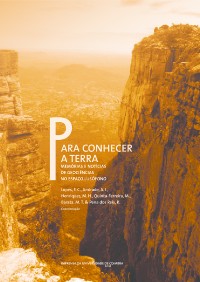Please use this identifier to cite or link to this item:
https://hdl.handle.net/10316.2/31394| Title: | Estratigrafia e interpretação estrutural de intervalos sísmicos do setor central da Bacia Lusitânica e na Bacia de Peniche (Portugal) | Other Titles: | Stratigraphy and structural interpretation of seismic intervails in the central sector of the Lusitanian Basin and in the Peniche Basin (Portugal) | Authors: | Cumbo, J. M. Reis, R. Pena dos |
Keywords: | Lusitanian Basin;Peniche Basin;Structural control;Seismic line;Bacia Lusitânica;Bacia de Peniche;Controlo estrutural;Linha sísmica | Issue Date: | 2012 | Publisher: | Imprensa da Universidade de Coimbra | Journal: | http://hdl.handle.net/10316.2/24406 | Abstract: | The Atlantic marginal basins in the Portuguese offshore include the Lusitanian
Basin and the Peniche Basin. The Lusitanian Basin outcrops and therefore the available information
is abundant. The knowledge of the Peniche Basin is limited to some published seismic
lines (ALVES et al., 2006). The working method consisted in measuring the thicknesses of
the different seismic units with an increasing distance to the structural elements considered to
have controlled the sedimentation. The data shows that the Cretaceous units in the Lusitanian
Basin seem to be less influenced by the salt and fault activity than the equivalent of the Peniche
Basin. On the contrary, in the upper Jurassic in the Lusitanian Basin, units show a stronger
control by the structure. In the Peniche Basin, the lower Jurassic units show an evident structural control. The used method allows a better comparison and interpretation of the seismic data O conjunto das bacias marginais do Atlântico Norte situadas no onshore e no offshore português inclui, entre outras, a Bacia Lusitânica (onshore e offshore raso) e a Bacia de Peniche (offshore profundo). A Bacia Lusitânica aflora em grande parte e, por isso, a informação acumulada é muito vasta; já a Bacia de Peniche é apenas conhecida através de algumas poucas linhas sísmicas publicadas (ALVES et al., 2006). Nas linhas sísmicas e respetivas superfícies estratigráficas interpretadas por vários autores, foram efetuadas medições de espessura dos intervalos sísmicos, a partir de estruturas, cuja influência na sedimentação é provável (núcleos de domos salinos, falhas maiores, etc.). Os dados obtidos foram representados e verifica-se que as unidades sísmicas do Cretácico na Bacia Lusitânica são menos afetadas pela migração do sal e pela atividade das falhas do que as equivalentes da Bacia de Peniche, em que é visível o falhamento das paredes das condutas do sal a condicionar fortemente as espessuras das unidades sísmicas. O Jurássico superior da Bacia Lusitânica mostra também uma influência marcada do falhamento e da migração do sal. A utilização da junção e análise dos refletores sísmicos permite capacitar e melhorar a comparação dos dados e, portanto, interpretar em conjunto tendências geométricas das unidades sísmicas em diferentes bacias e em diferentes intervalos de tempo geológico. |
URI: | https://hdl.handle.net/10316.2/31394 | ISBN: | 978-989-26-0534-0 (PDF) | DOI: | 10.14195/978-989-26-0534-0_9 | Rights: | open access |
| Appears in Collections: | Para conhecer a Terra: memórias e notícias de Geociências no espaço lusófono |
Files in This Item:
| File | Description | Size | Format | |
|---|---|---|---|---|
| 9-para_conhecer_a_terra_artigo.pdf | 1.17 MB | Adobe PDF |  |
Items in DSpace are protected by copyright, with all rights reserved, unless otherwise indicated.
